#25 Anatomy of an Amabie
August 2020. On papier-mâché, supernatural creatures, and feeling one's way forward.
Dear friends, welcome to August’s newsletter. If you’re new here, I’m Flory Leow, and this newsletter is usually sent on a monthly basis. 8 issues were sent in July to make up for a longer hiatus. I’m keeping it experimental, and may begin sending this twice a month. Regardless, there will be at least one a month going forward.
Read the archives here; if my writing brightens up your day or makes you think, you should share this indiscriminately with lots of people. Especially people who might want to hire someone to write things!
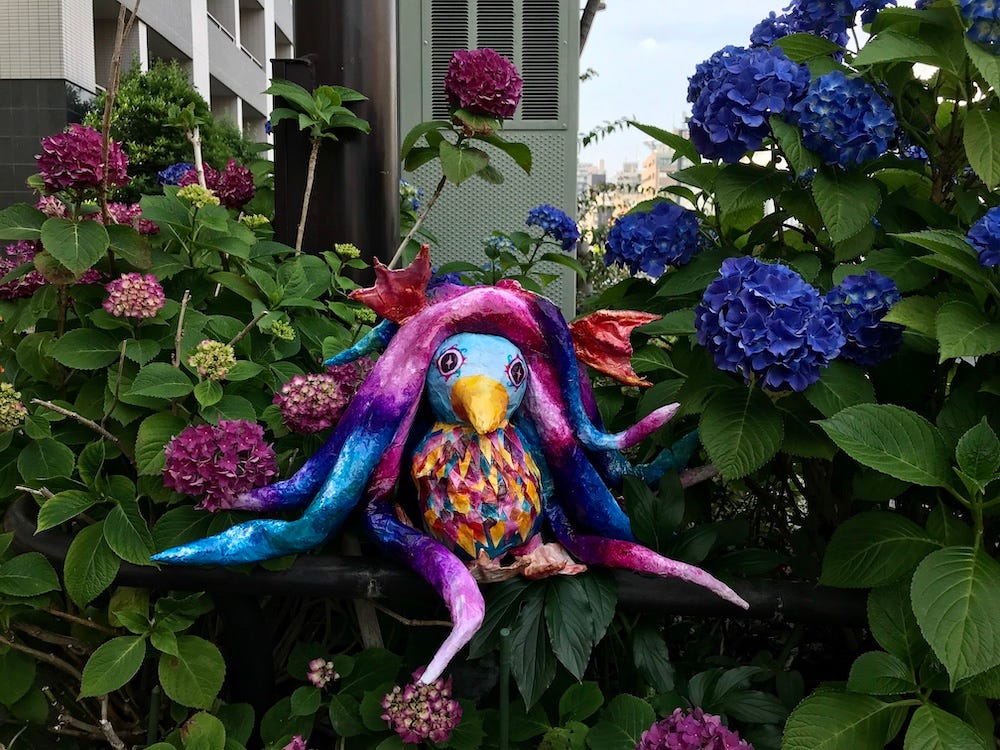
In her essay That Crafty Feeling, Zadie Smith offers a way to categorise novelists into two broad camps: Macro Planners and Micro Managers. The former group of people plans everything before they write. They have spreadsheets detailing characters, plot, timelines, scenes, reference materials. All possible moving parts and outcomes are accounted for. (I know someone exactly like this and their frightening levels of organisation never cease to amaze me.) But people in the latter group, to put it simply, “start at the first sentence of the novel and … finish at the last.”
Like Smith, I mostly fall in the Micro Manager camp when it comes to writing. I try to plan what I write but it is nigh impossible 90% of the time outside of ‘content.’ Every newsletter you might have read so far (including this one) usually emerges sentence by sentence, throwing in surprises and twists until I have a draft, and that draft is usually very close to what you end up receiving in the inbox. I never know how an essay ends until it does. The idea of planning everything I will write about in an essay beforehand sounds wonderfully organised and idyllic but rarely works out in practice. (For example, this newsletter was not meant to be about writing. It was also not supposed to be this long.) I recently struggled through the entire writing of a 2000-word feature based on a clear structure and submitted outline, and realise now that I should simply have written it as I might write something else: sentence by sentence, until it was done.
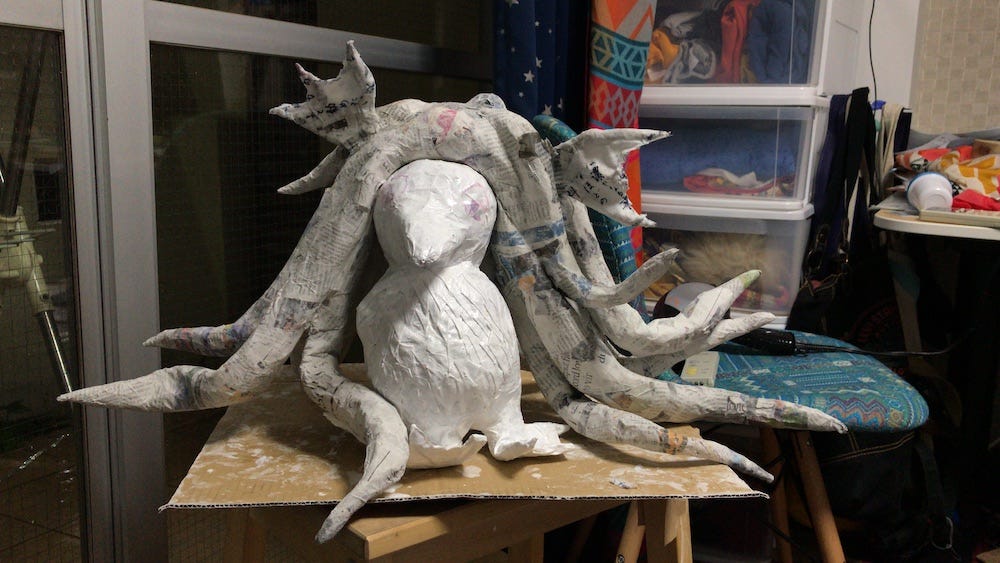
As in writing, so in life: I usually have no idea where I’m going until I arrive. A friend put it this way: we feel our way forward. It is true for the way I travel. I might have a city or country in mind, maybe even a few districts or restaurants once I get there, but no real itinerary or plan. I tend to wander until I decide to go home. This lack of structure drives my best friend up the wall when we travel together: they are more destination-oriented, and generally require end points, goals, multiple routes. The irony, of course, is that a) much of my professional life has involved planning people’s Japan holidays and making itineraries for them; and b) I actually am, in some ways, an obsessive planner who can’t function without a to-do list, a.k.a. a form of structure (though in reality most of the to-do list does not get done.) But in general, structure and planning have mostly eluded my writing and life trajectory thus far.
Macro Planners have their houses largely built from day one, and so their obsession is internal––they’re forever moving the furniture. They’ll put a chair in the bedroom, the lounge, the kitchen and then back in the bedroom again. Micro Managers build a house floor by floor, discretely and in its entirety. Each floor needs to be sturdy and fully decorated with all the furniture in place before the next is built on top of it. There’s wallpaper in the hall even if the stairs lead nowhere at all. –– Zadie Smith, That Crafty Feeling
To my surprise, the micromanager approach translates into making papier-mâché––sort of. That doesn’t mean zero planning. It means being exceedingly careful about the initial steps, or in Smith’s terms, a twenty page-long “existential drama” to determine the kind of novel (artwork) one is writing (sculpting). It is about scene-setting. It is about agonising over materials and techniques. It is especially important if you are making a sculpture of something that doesn’t exist, like an Amabie. It is, however, worth it: “once the tone is there, all else follows.”
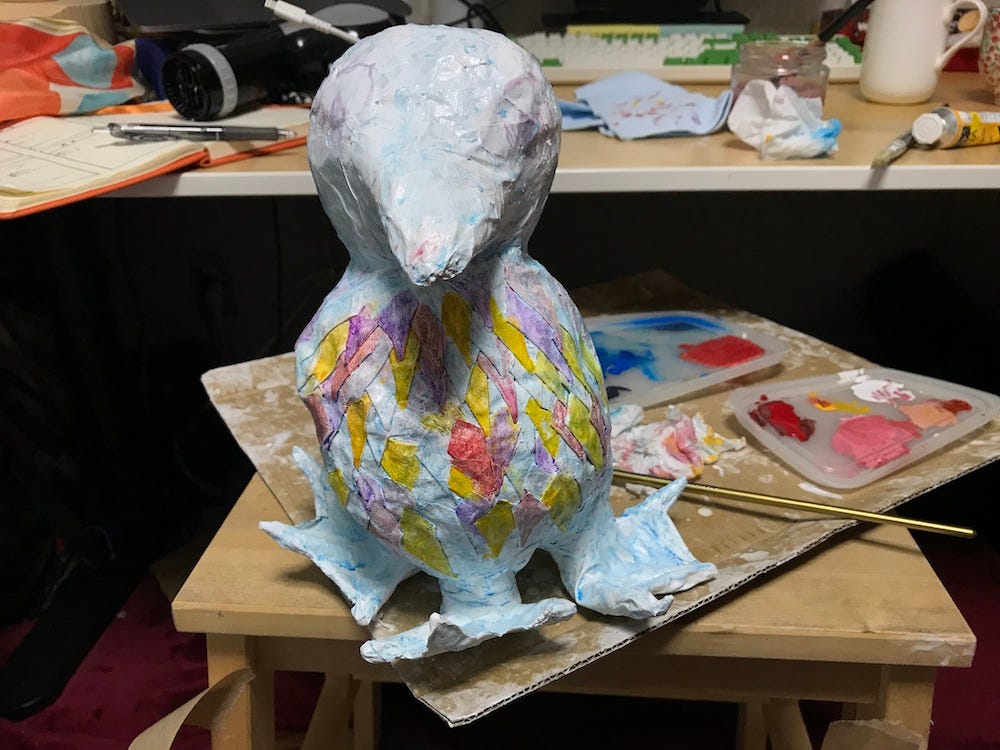
Out of the vast pantheon of yokai (supernatural spirits) in Japanese folklore, the Amabie was until recently a fairly minor one. It supposedly emerges from the sea to prophesise abundant harvest or plague. This year, it was resurrected as a pandemic-fighting spirit; you may have read about it as it made its way around the internet earlier this year.
I decided to try making a piece of art in early May, back when all my existing tourism and content work had been decimated by the realities of zero-travel, and became fixated on the idea of making a papier-mâché sculpture of the Amabie. I don’t think I can really explain this. I hadn’t made art since I left high school, even though I had dreamed of art school at one point. I have only ever produced one other (complete) papier-mâché sculpture in my life, which was a rather squat-looking orange dragon based on a Paul Kidby illustration made at age 15 or so, and I had no recollection as to how I made it. A drawing would have been easier. Even a painting would have been less commitment. But I apparently do not know how to take on low-stakes projects, so a sculpture it would be.
If you have any leeway to support this newsletter, I’d love it if you considered a paid subscription. I write to find readers to connect with, a personal, intimate readership like friends in a living room, without having to rely on large media publications.

To make the Amabie, I had to first understand how to make a papier-mâché sculpture. There are two broad techniques: the strip method, or the pulp method. In the first, you lay strips of paper (newspaper is cheap and light) on some form of support. In the second, you soak paper and add glue to it to make a thick clay-like slurry, which gives you more texture to work with. You can also incorporate cloth mâché, where you soak strips of cloth in glue and drape them over your underlying structure; it gives you incomparably cool textural surfaces to paint on. (The technique was pioneered by Dan Reeder for his dragon sculptures, and you can read about them in his books. I used many of his techniques to make the Amabie.)
One decision involved adhesive. Do I go with a pure flour and water mixture, or add glue? (Both.) Should I add salt? (Yes.) Do I try a cooked-paste method so it dries clear? Should I invest in some art paste or acrylic gel? (No.) For the body of the sculpture: do I use balloons, make a wireframe, use some kind of object as a base? (I used wads of newspaper taped together into rough shapes and papier-mâché’d over; with bendable wireframes for more complicated shapes like hair, ears, and webbed feet.)
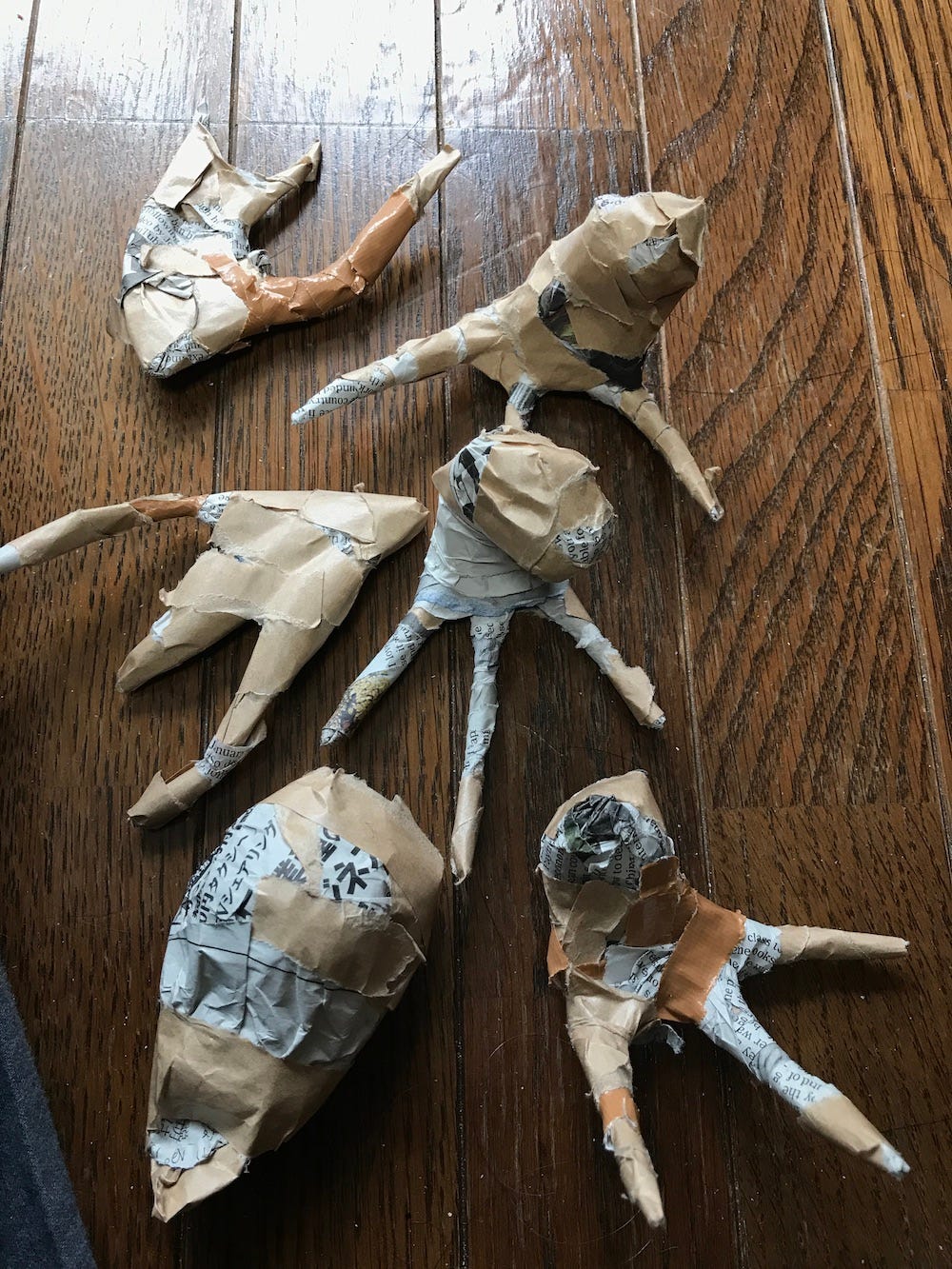
Then there was the question of what it might look like. I didn’t know––like know know––but I sketched out a rough idea after examining dozens of drawings around the internet. It wouldn’t be like sculpting from a single block of material, either; I would be building this out of several parts. It forced me to think in three dimensions, to break down the sculpture into its respective components. A head, a beak, a body, three feet, two ears, hair. I didn’t know how I was going to make the hair. Maybe flattened layers of paper. Nor did I know exactly how I was going to paint it. But that could come later.
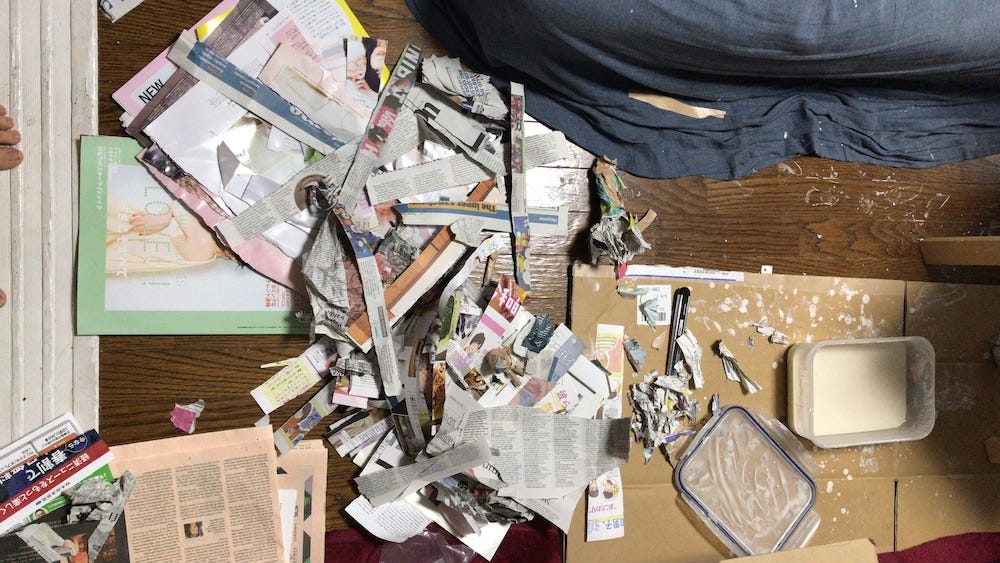
For around three weeks, the narrow strip of space between my desk and my bed turned into a makeshift papier-mâché studio as I built the Amabie, layer by layer, component by component. I don’t really remember what I ate (probably tomato pasta) or where I went that month. I watched a lot of TV in the background. I worked on an ebook while waiting for layers to dry. My fingernails were permanently encrusted with glue and flour. I spent 7 days straight painting for 14 hours a day. I flew off my bicycle in the middle of May, slammed my head on the pavement, broke my helmet, and still came out alive. I couldn’t do anything but paint for several days after that accident.

I will not bore you with pages about the entire process, but will say that this was a ton of problem-solving from start to finish. I discovered that emulating ‘hair’ would mean scrapping the original idea of making a single fitting curved sheet, and instead building volume through thick tentacles securely fastened together with tape and glue. Then it was a matter of adding more, curl by curl, until it looked dramatic and voluminous enough from all angles. It took several iterations to make a webbed foot that worked and would fit with the body. I figured out the Amabie’s scale pattern as I glued pieces of cloth down, testing the colour scheme with colour pencil before going over with layers of paint, adjusting shades and colours as I went along. Sculpting was as time-consuming as it sounds, but also strangely absorbing and satisfying. (Plus, I think she turned out pretty neat!)
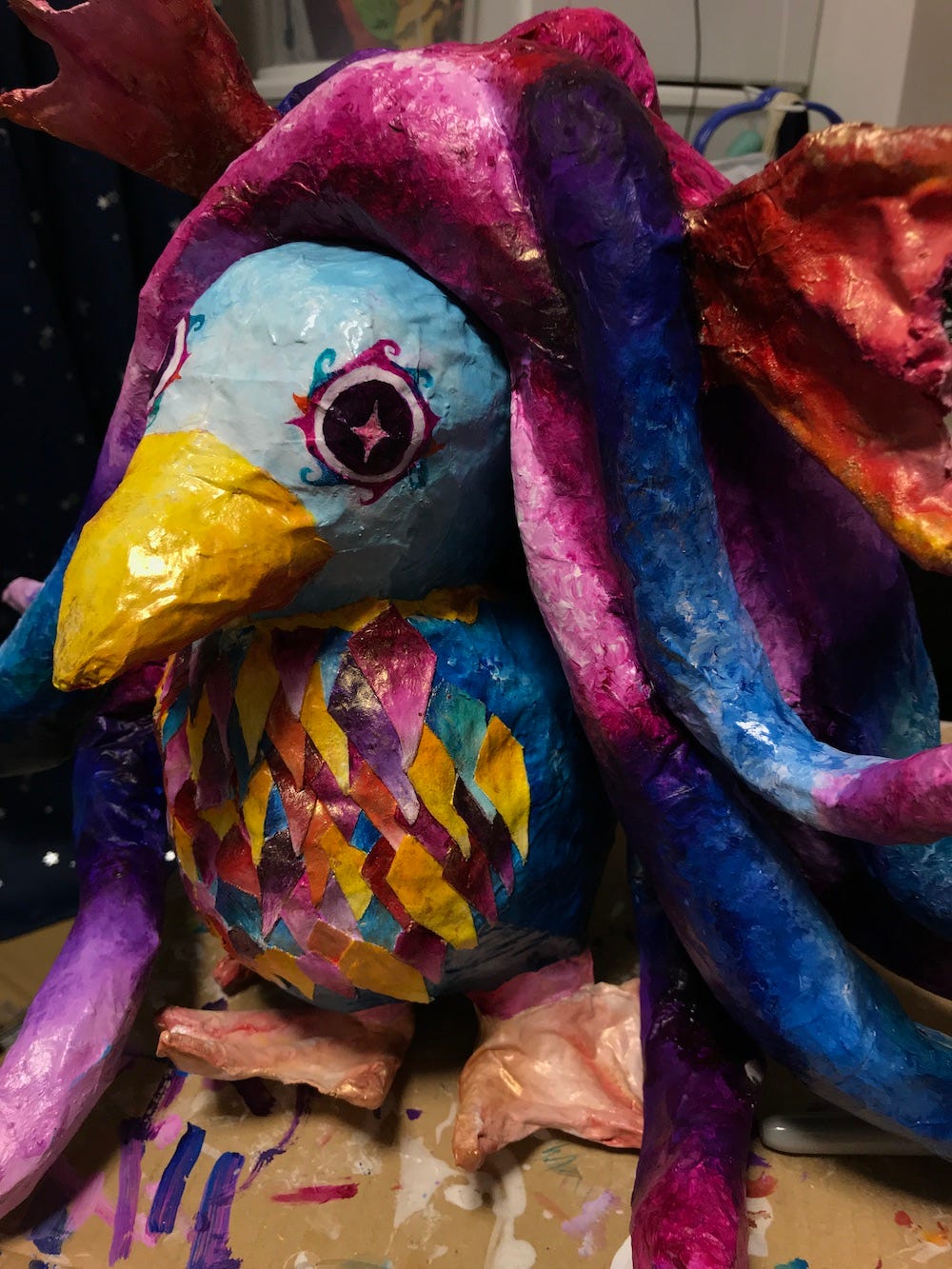
The process of making this Amabie feels very much like what I’m doing with my career. I have a lot of raw material in my hands but no blueprint to work from. I can only see as far as the next month. I’ve never really understood what I was doing in my work until I did it. I don’t even know where I’d like to be in a decade. I once had a conversation with someone who had a detailed five-year plan, which blew my mind; I just did not understand how it was even possible to think like that. I’m constantly borrowing ideas from other people to try and cobble a life together, but there’s no one person I can point to and say, that’s it. That’s someone I can emulate.
A lot of this comes from not knowing anyone else with a similar background (Malaysian/Straits Chinese, UK university-educated, often passing for someone from the ‘West’ in an odd chameleon sort of way, see #class #codeswitching) who does what I do in Japan. It’s not that I feel unwelcome, but I often feel a little out of place. I look around the (metaphorical) travel industry room, or the ‘freelance-writing-in-Japan’ room, and I don’t see anyone who looks (culturally) like me. It isn’t a bad thing. It hasn’t really hindered any opportunities (as far as I’m aware). But it can feel a little lonely and daunting, especially when I look at the published writers who put out stories in and about Japan: they don’t look like me.

These days, mostly, I look at the Amabie as a reminder that it’s alright to still be figuring things out. It’s even a motivator of sorts: If I can make the sculpture, I can write this pitch! Nothing in life seems to turn out anything the way I expect it to (usually not at all) but something might come out of it. I might end up with something a little weird but also kind of neat. Maybe it’ll be fun and colourful. Maybe it’ll be something that makes me happy, and makes other people smile, too. Despite this entire year, I’m slowly coming around to the idea that it might just be okay to feel my way forward into the next version of my life.
LONG READS, GOOD THINGS
A Ghost Haunts the Tokyo Olympics (Electric Literature)
Good Conflict (New York Magazine)
The Crisis Cliche (Paris Review)
How The Pandemic Defeated America (The Atlantic) (Side note: If Malaysians want to claim Justin Trudeau for having the tiniest drop of Malaysian blood in him, we are all obligated to stan Malaysian-born (now Brit) Ed Yong for his superb work in science writing. Just sayin’.)
The Accidental Beekeper (VQR)
Marmalade: A Very British Obsession (Longreads)
How a Cheese Goes Extinct (The New Yorker)
The Truth Is Paywalled But The Lies Are Free (Current Affairs)
Finn Wolfhard: ‘I have so much crazy energy’ (The Guardian)
‘It Was a Losing Fight to Write Anything That Wasn’t “Ethnic”’ (Eater)
Illustrations by Rei Kato are a Summer Mood (Spoon & Tamago)
CURRENTLY PLAYING
Pavel Haas Quartet – Dvorak: String Quartets Nos. 12 & 13: I first heard this (specifically the ultra-charming “American”: III. Molto vivace) in a taxi in Seoul, on a 7-hour layover en route to San Francisco. Sometimes I listen to this and I’m transported back to that freezing day in February, and I remember what it’s like to be in another place where I don’t understand anything that’s being said or written, what it’s like to be surprised by the radio instead of lulled into predictability by an algorithm.
Massive Attack x Young Father ft. Professor Guy Standing – Eutopia: It’s Massive Attack, but it’s also about UBI and features an academic from my old university, and if that isn’t cool I don’t know what is.
AN ANNOUNCEMENT OF SORTS
Thanks to Tom O. from Shimaguni Brighton, I will be giving a (free!) online talk this Saturday (August 8th) about travel in Japan! This is also known as ‘listen to me derp a little about life here.’ Yes, I’m really nervous, so please be nice. You can sign up at the link above. See you there!


